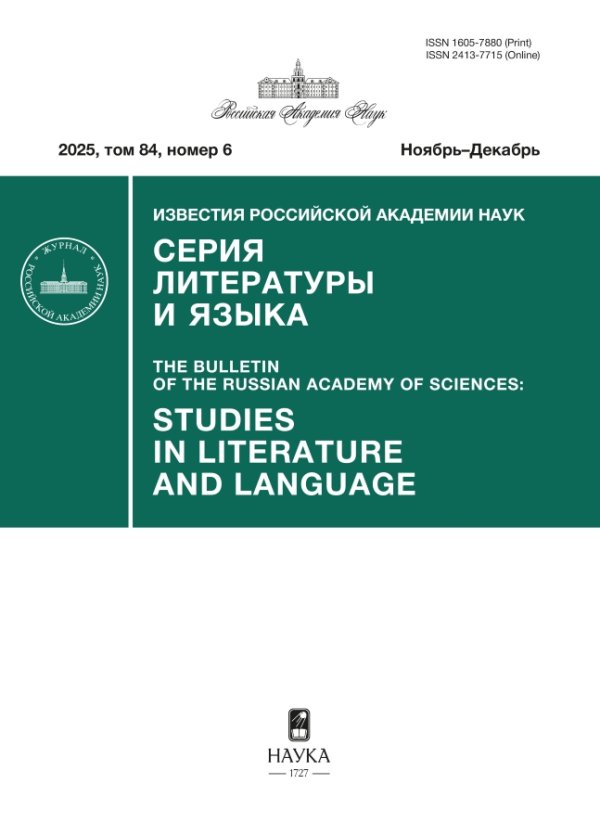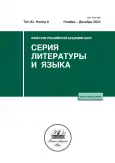“Parzival” by Wolfram von Eschenbach and “Parzival” by L. V. Ginzburg: The Pragmatics of Incomplete Translation
- Authors: Khokhlova A.V.1
-
Affiliations:
- A. M. Gorky Institute of World Literature of the Russian Academy of Sciences
- Issue: Vol 82, No 6 (2023)
- Pages: 100-111
- Section: Articles
- URL: https://journals.rcsi.science/1605-7880/article/view/250586
- DOI: https://doi.org/10.31857/S160578800029128-6
- ID: 250586
Full Text
Abstract
About the authors
Alyona V. Khokhlova
A. M. Gorky Institute of World Literature of the Russian Academy of SciencesRussian Federation, Moscow
References
- Гинзбург Л. Разбилось лишь сердце мое. М.: Советский писатель, 1983. 254 с.
- Средневековый рыцарский роман и повесть. М.: Художественная литература, 1974.
- Михайлов А.В. Обратный перевод. Русская и Западно-европейская культура: проблемы взаимосвязи. М.: Языки русской культуры, 2000. 852 с.
- Gibbs M. E. Medieval German literature. Taylor&Francise-Library, 2002. 457 p.
- Махов А.Е. “Рассказ о верности пойдет…” Вольфрам фон Эшенбах и его роман // Парцифаль. М.: Русский путь, 2004.
- Bumke J. Courtly Culture: Literature and Society in the High Middle Ages. Berkeley and Los Angeles: University of California Press, 1991. 770 p.
- Classen A. Sexual violence and rape in the Middle Ages. DeGruyter, 2011. 282 p.
- Dalby D. Lexicon of the Mediæval German Hunt. A Lexicon of Middle High German terms (1050–1500), associated with Chase, Hunting with Bows, Falconry, Trapping and Fowling. Walter de Gruyter, 1965.
- Weick R. Ornithologie und Philologie: Am Beispiel von ʻmûzersprinzelîn’ und ʻgalander’ in Wolframs Parzival. Mediaevistik. Vol. 2. 1989. S. 255–269.
- Kaiser Friedrich II. Über die Kunst mit Vögeln zu jagen (De arte venandi cum avibus, dt.). Unter Mitarbeit von Dagmar Odenthal übertragen und herausgegeben von Carl Arnold Willemsen, 2 Bände und Kommentarband. Frankfurt am Main, 1964 und 1969.
- Nellmann E. Wolfram von Eschenbach: Parzival II. Text und Kommentar. Nach der Ausgabe Karl Lachmanns revidiert und kommentiert von Eberhard Nellmann. Übertragen von Dieter Kühn. Frankfurt am Main, 2006.
- Herman H.J. Sir Kay, Seneschal of King Arthur’s court. Arthurian Interpretations. Vol. 4, No. 1 (Fall 1989), pp. 1–31
- Ле Гофф Ж. Средневековый мир воображаемого. М.: Издательская группа “Прогрессˮ, 2001. 440 с.
- Михайлов А.Д. Французский рыцарский роман. М.: Наука, 1976. 351 с.
- Вольфрам фон Эшенбах. Парцифаль. М.: Русский путь, 2004.
- Wolfram von Eschenbach. Parzival. Herausgegeben von Albert Leitzmann. Max Niemeyer Verlag, Tubingen, 1995. (Altdeutsche Textbibliothek)
- Саксонское зерцало. М.: Наука, 1985. 272 с.










